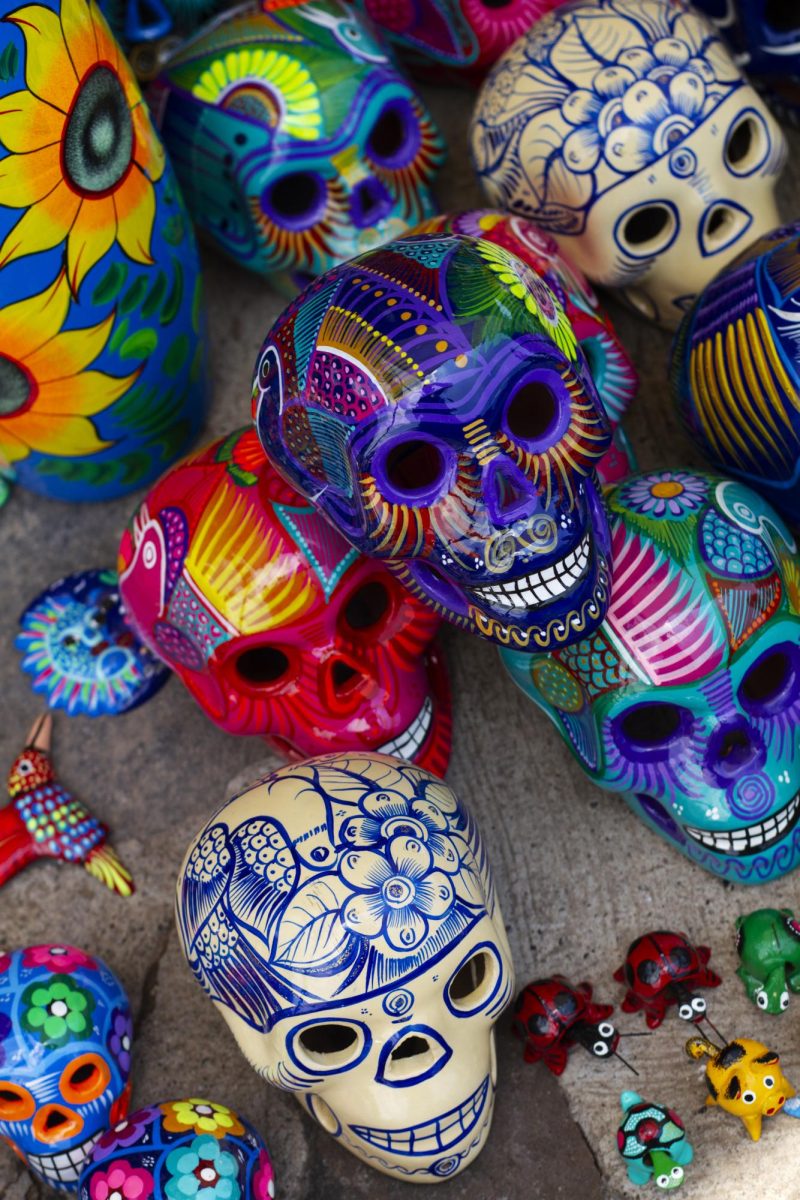Día de los Muertos (Day of the Dead) is a Mexican holiday celebrated on November 1 – 2. This holiday celebrates loved ones that have passed away by making Ofrendas (altars), honoring their lives.
During these two days, it is believed that the border that separates the living and the dead is dissolved. During this time, the souls of the dead awaken from their rest to eat, drink, and dance with their loved ones again.
Ofrendas are usually decorated with yellow marigold flowers, photos of the loved one, and their favorite foods and drinks. This is believed to help guide their loved ones from the land of the dead back home.
Calavera (skeleton skulls) and calacas (skeletons) are often used to symbolize Día de los Muertos. Cartoon artist José Guadalupe Posada incorporated these figures into his art mocking politicians. His most well-known artwork included female skeleton makeup and over time was adopted as one of the most recognizable icons for Día de los Muertos.
Da de los Angelitos (Day of the Little Angels) starts at midnight on November 1, when deceased children are believed to reunite with their families for 24 hours. Ofrendas are decorated with the children’s favorite snacks, candies, and toys.
Día de los Difuntos (Day of the departed adults) starts at midnight on November 2, when deceased adults are believed to reunite with their families. Ofrendas are more adult-like, with tequila, pan de muerto, and mezcal.
At noon on November 2, the holiday is brought to an end with parades on the streets. Many people gather in their cities as they dress up with Calavera face paint. Many people visit cemeteries to reunite with their loved ones, clean their graves, and decorate them with marigold flowers, gifts, and sugar skulls.
The root of Día de los Muertos goes back almost 3,000 years. The Aztecs and other Nahua people living in what is now central Mexico saw death as an ever-present part of life.
After one had passed away, they were believed to travel to Chicunamictlán, the land of the dead. After getting through nine challenges, a several-year journey, the person’s soul would reach Mictlán, their final resting place.
The people of Nahua, in honor of honoring the dead, in August, family members would provide food, water, and whatever else they’d need for their long journey. This is what inspired people to leave their loved ones offerings on the Day of the Dead.
In ancient Europe, celebrations of the dead took place in the fall as well. These celebrations consisted of bonfires, feasting, and dancing. Roman Catholic Churches unofficially adopted these celebrations into their own, making it a two-day holiday, All Saints Day and All Souls Day, which were held the first two days of November.
In medieval Spain, people would bring food and drinks to their loved ones, such as wine and pan de ánimas (spirit bread), on All Souls Day. They would also cover their graves with flowers and candles to help the dead souls make their way back home to earth. When Spanish conquistadors found the new world in the early 16 century, they brought these traditions with them.

